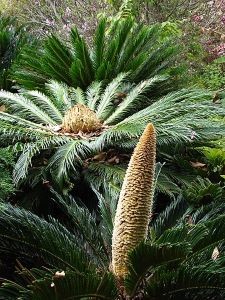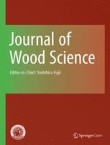Welcome to the Journal of Wood Science official website!
Featured Article
Cellulose and lignin purified from Metroxylon sagu palm fronds by a new technology with 2-methylanthraquinone cooking and peroxymonosulfuric acid bleaching

The study explores using sago palm fronds (SPF) for eco-friendly high-purity cellulose production. It employs prehydrolysis, soda cooking with 2-methylanthraquinone (MAQ) as a green additive, and totally chlorine-free (TCF) bleaching. Optimal conditions of prehydrolysis at 150°C for 3 hours, followed by soda-MAQ cooking at 160°C for 1.5 hours with 0.03% MAQ and 23% active alkali, produce high-purity cellulose with desirable properties. The soda-MAQ method excels in delignification, improving pulp yields and reducing kappa numbers. Additionally, lignin recovery holds potential for biorefinery applications.
(Article published on 9 April 2024)
-
-
Prospecting for non-timber forest products by chemical analysis of four species of Lauraceae from the Amazon region of Colombia
-
Developing a lightweight corrugated sandwich panel based on tea oil camellia shell: correlation of experimental and numerical performance
-
Employing a mixture of fine-particle PKS, glycerol, and citric acid as an eco-friendly binder for plywood production from rubberwood (Hevea brasiliensis) veneer
-
Artificial-weathering test requirements for fire-retardant-treated wood to reproduce optimal chemical retention and moisture conditions
-
Lignin pyrolysis reactions
-
Development of bamboo scrimber: a literature review
-
Mechanical and physical properties of Cross-Laminated Timber made from Acacia mangium wood as function of adhesive types
-
Physiological effects of wood on humans: a review
-
A review of recent application of near infrared spectroscopy to wood science and technology
Featured Article
One-pot Eucalyptus globulus wood fractionation in acid-catalyzed mixtures of water and 1-pentanol: an optimization study
Eucalyptus globulus wood underwent processing using a mixture of 1-pentanol, water, and diluted acid catalyst. Response Surface Methodology assessed the effects of variables like 1-pentanol proportion, catalyst charge, and temperature on wood solubilization and phase composition. Statistical optimization identified optimal conditions, achieving extensive lignin and hemicellulose removal with good cellulose selectivity. Enzymatic hydrolysis yielded near-complete conversion, confirming 1-pentanol's potential for Eucalyptus globulus wood-based biorefineries.
(Research published on 2 April 2024)
Aims and scope
The Journal of Wood Science is the official journal of the Japan Wood Research Society. This journal provides an international forum for the exchange of knowledge and the discussion of current issues in wood and its utilization. The journal publishes original articles on basic and applied research dealing with the science, technology, and engineering of wood, wood components, wood and wood-based products, and wood constructions. Articles concerned with pulp and paper, fiber resources from non-woody plants, wood-inhabiting insects and fungi, wood biomass, and environmental and ecological issues in forest products are also included. In addition to original articles, the journal publishes review articles on selected topics concerning wood science and related fields. The editors welcome the submission of manuscripts from any country.
Annual Journal Metrics
-
Citation Impact 2023
Journal Impact Factor: 2.2
5-year Journal Impact Factor: 2.5
Source Normalized Impact per Paper (SNIP): 1.098
SCImago Journal Rank (SJR): 0.515Speed 2023
Submission to first editorial decision (median days): 18
Submission to acceptance (median days): 119Usage 2023
Downloads: 662,652
Altmetric mentions: 62 -
Associated Society
Journal of Wood Science is affiliated with The Japan Wood Research Society.
- ISSN: 1611-4663 (electronic)
